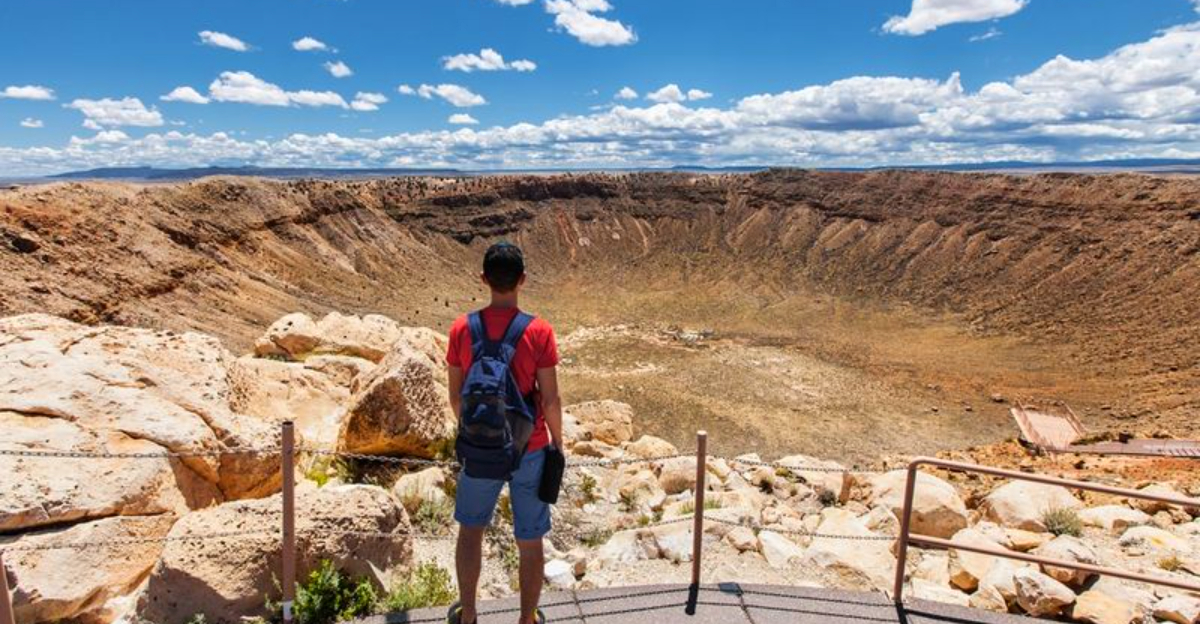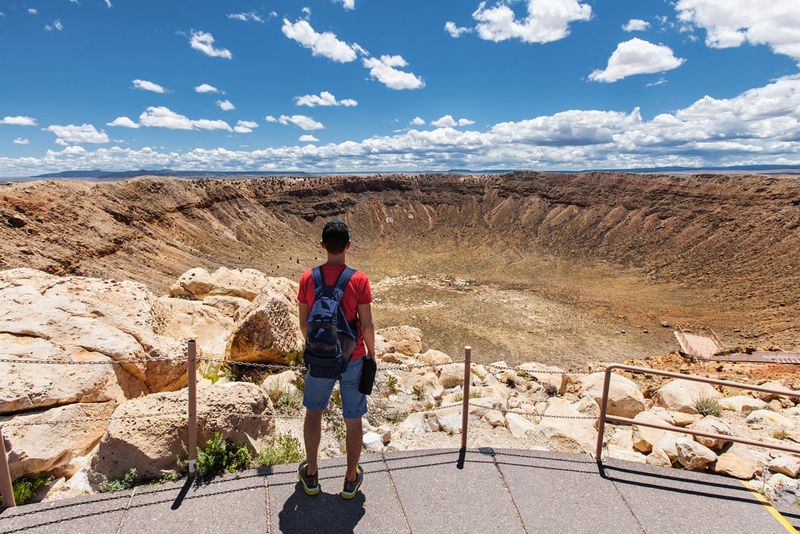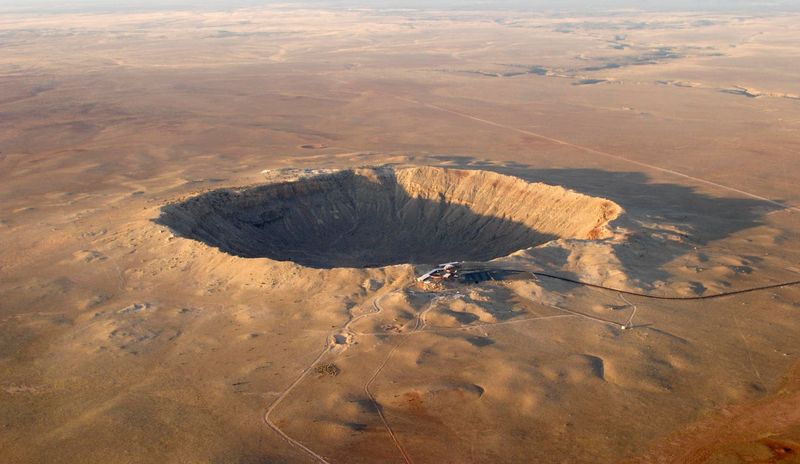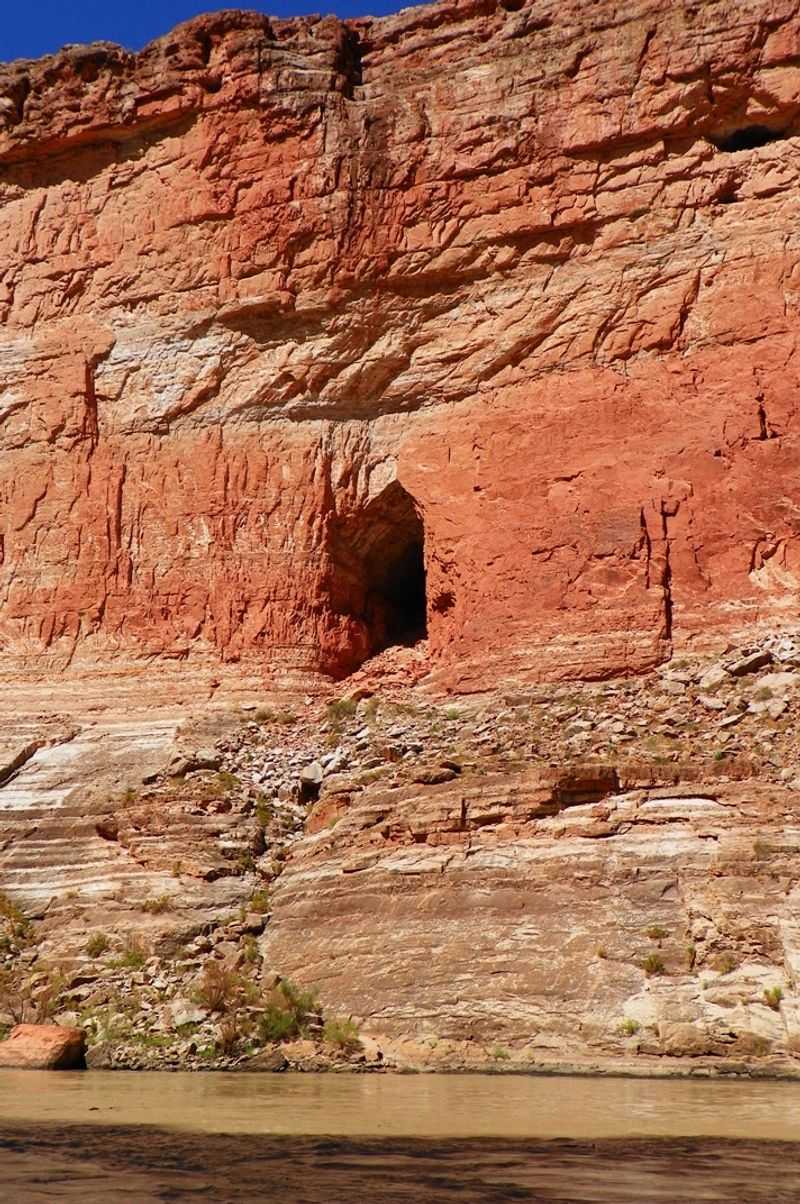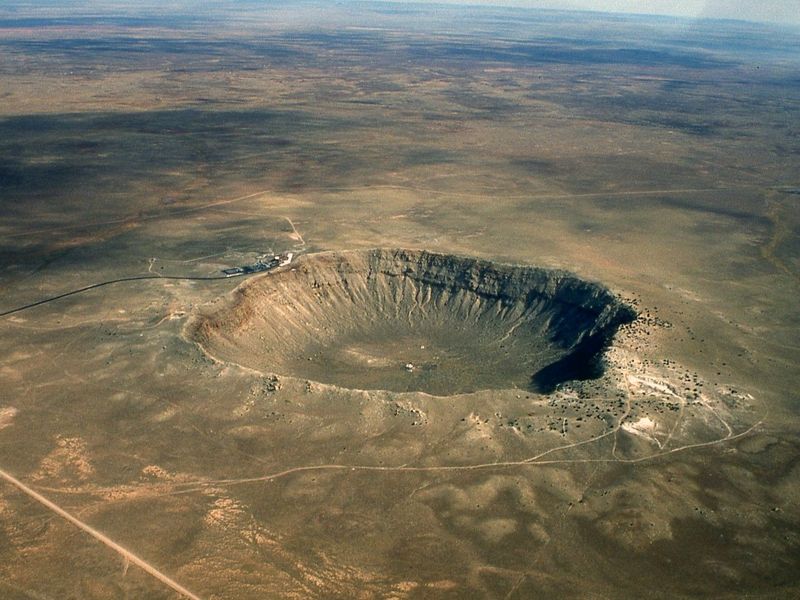Around 56,000 years ago, a massive space rock slammed into northern Arizona, carving out what we now call Meteor Crater. But the story doesn’t end there—scientists believe this cosmic collision may have reached all the way to the Grand Canyon, over 100 miles away. New research suggests the impact’s powerful shockwaves triggered a giant landslide that dammed the Colorado River, creating a temporary lake deep within the canyon. This discovery links two of the Southwest’s most famous landmarks through a single, explosive moment in Earth’s history.
A Cosmic Event Reaching Grand Canyon
Imagine a space rock weighing as much as 3,000 cars hurtling toward Earth at thousands of miles per hour. That’s what happened when an asteroid struck Arizona about 56,000 years ago, creating the famous Meteor Crater. Scientists recently discovered that this impact didn’t just leave a hole in the ground—its effects traveled far beyond the crater itself.
Powerful shockwaves from the explosion rippled across the landscape like invisible waves. These震waves reached the Grand Canyon, more than 100 miles away, and may have shaken loose unstable rock formations along the canyon walls. The result? A massive landslide that temporarily blocked the mighty Colorado River.
This connection between the crater and canyon shows how cosmic events can reshape entire regions in surprising ways.
Shockwaves, Landslides & River Damming
The asteroid that created Barringer Crater packed an incredible punch. Made of nickel and iron, it weighed roughly 300,000 tons and hit with the force of a magnitude 5.4 earthquake. When something that powerful strikes Earth, the ground doesn’t just shake nearby—it trembles for miles around.
Seismic waves from the impact traveled over 100 miles, eventually reaching the Grand Canyon’s towering rock walls. These ancient cliffs, already weakened by erosion and time, couldn’t withstand the sudden vibration. A catastrophic rockslide crashed down into the canyon, creating a natural dam that completely blocked the Colorado River’s flow.
Geological evidence found downstream shows sediment layers consistent with a damming event that lasted for centuries, proving the river stopped flowing for a significant period.
Clues in Stanton’s Cave & Driftwood
High above today’s Colorado River sits a cave that holds secrets from the distant past. Stanton’s Cave, perched tens of meters above the current water level, seemed like an odd place to find driftwood—until scientists realized what it meant. Wood doesn’t float uphill on its own, so how did it get there?
Geologists discovered pieces of ancient driftwood and lake sediment inside the cave, evidence that water once reached that height. Using modern radiocarbon dating techniques, they determined the wood was approximately 55,600 years old. This timing matches almost perfectly with the Meteor Crater impact date.
For water to carry driftwood that high into the cave, a massive flood must have occurred behind a dam, raising the river level dramatically and creating a temporary lake.
The Nankoweap Paleolake: Extent & Features
Scientists gave this ancient body of water a name: Nankoweap Paleolake. The prefix “paleo” means ancient, and this lake was truly massive by any measure. Stretching roughly 80 kilometers (50 miles) upstream from the dam site, it transformed a section of the Grand Canyon into a deep reservoir.
At its deepest points, the lake reached over 100 meters—that’s about 370 feet, roughly the height of a 30-story building! The dam itself formed about 35 kilometers downstream from Stanton’s Cave. Sediment layers and river cobbles piled atop the dam reveal that the Colorado River eventually overtopped it, maintaining the lake for perhaps 1,000 years.
This paleolake would have completely changed the canyon’s ecosystem and landscape during its existence.
Weighing Alternative Explanations
Not everyone is convinced the meteor caused the landslide, and that’s actually good science at work. Researchers always consider multiple explanations before drawing conclusions. The paleolake could have formed from a natural landslide that had nothing to do with the space rock, or perhaps a regular earthquake triggered the rockfall independently.
Canyon walls collapse periodically without cosmic help, after all. However, several factors make the impact scenario particularly convincing. The timing matches almost perfectly—55,600 years for the driftwood versus 56,000 years for the crater. The elevation of the driftwood suggests an enormous amount of energy was needed to create such a tall dam.
Regular landslides rarely produce dams capable of backing up water to such heights, making the impact connection increasingly persuasive to many geologists.
Implications & Next Steps
Did you know a single space rock could connect two of America’s most iconic natural landmarks? If this theory proves correct, Meteor Crater and the Grand Canyon share a dramatic origin story tied to one cosmic event. This discovery also teaches us that asteroid impacts can have consequences far beyond their immediate blast zones.
The shockwaves, landslides, and flooding triggered by impacts can reshape entire regions in ways we’re only beginning to understand. Researchers aren’t stopping here, though. They’re planning deeper investigations of cave sediments, more precise dating of the ancient driftwood, and computer models to simulate how such a massive flood would have behaved.
Each new piece of evidence brings us closer to understanding how our planet’s landscape was sculpted by forces from space.
